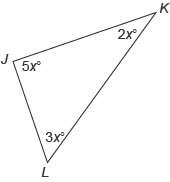
Mathematics, 05.12.2019 02:31, xojade
Recent reviews (e. g., button et al. 2013) suggests that neuroscience research papers have a median power (1 )=0.18, given =0.05. being a skeptic, your prior belief is that only 1 0% of research studies examine “real” effects; you consider the rest to have true effect sizes of effectively zero. given this information, answer the following questions:
a. before examining a neuroscience paper, what probability describes your prior belief about whether it will report a real effect (denoted by ( what probability describes your prior belief that no effect exists (denoted by ( ∅
b. let “sig.” denote a significant result within a given study. given the information above, report the values of the two probabilities: (sig.| ∅) and (sig.| ). additionally, identify each of these probabilities by name.
c. given the four probabilities reported above, what is the value of ( also, describe in english what this probability tells us.
d. using bayes’ rule, calculate your posterior belief that the published significant result describes a true effect. interpret the resulting value in english, and compare it to your prior belief.
e. suppose that you re-read the same study and realize that it is guilty of p-hacking, to the extent that its effective rate of false positives is actually closer to =0.40. assuming the power of the study is still the same (0.18), re-calculate your posterior belief that this published significant result describes a true effect. what does this result tell you about the dangers of p-hacking (or running multiple comparisons, or using any other method that inflates your type i error rate)?

Answers: 3
Other questions on the subject: Mathematics

Mathematics, 21.06.2019 20:30, attp203
Martha has a deck of cards. she has lost some of the cards, and now the deck only contains nine spades, eleven diamonds, eight clubs, and twelve hearts. martha predicts that whenever she draws a card from the deck without looking, she will draw a club one-fifth of the time. which activity would best allow martha to test her prediction? a. randomly draw a card from the box and see if it is a club. b. randomly draw a card. then, continue to draw another card until all eight clubs are drawn. c. randomly draw and replace a card 120 times. then, observe how close to 30 times a club is drawn. d. randomly draw and replace a card 100 times. then, observe how close to 20 times a club is drawn.
Answers: 3

Mathematics, 21.06.2019 21:30, izabelllreyes
Look at triangle wxy what is the length (in centimeters) of the side wy of the triangle?
Answers: 2
Do you know the correct answer?
Recent reviews (e. g., button et al. 2013) suggests that neuroscience research papers have a median...
Questions in other subjects:

Mathematics, 29.01.2021 18:30

Mathematics, 29.01.2021 18:30

History, 29.01.2021 18:30


Mathematics, 29.01.2021 18:30

Mathematics, 29.01.2021 18:30


Chemistry, 29.01.2021 18:30


Mathematics, 29.01.2021 18:30







